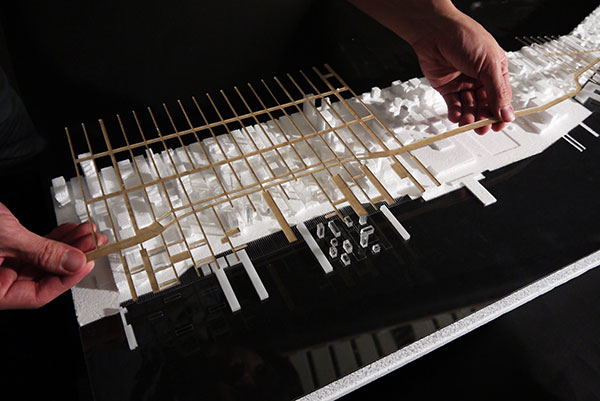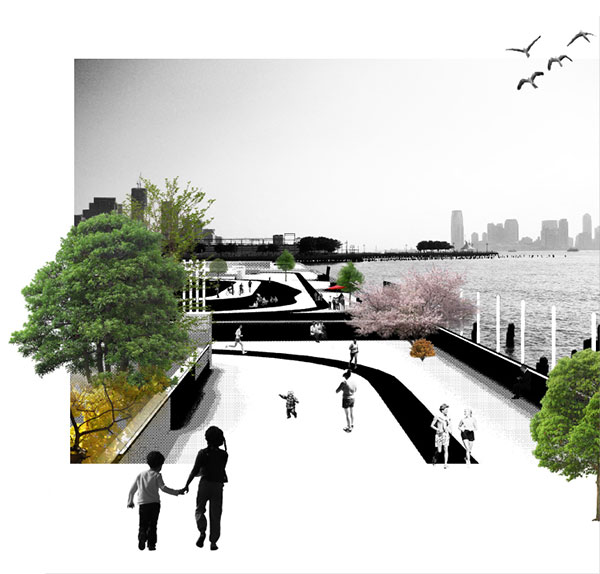Rethinking the Manhattan Grid: Score for Designing the Future
FRAMEWORK
Manhattan’s development has been based on Commissioners’ Plan which has just celebrated its second centenary. The precision of layout, the judicious definition of avenues and streets, and the geometry of the city blocks are still interesting and thought provoking. Many initiatives and projects have taken place on the island, gradually configuring the forma urbis of the central area of New York that can only be understood in terms of the forcefulness of the seminal grid project proposed at that time.
The hypothesis of the Studio is to verify the capacity for transformation on the basis of the initial models, seeing them as layouts with the potential for constant reinterpretation that suggests multiple urban forms in keeping with the evolving demands of the programme.
If 20th-century Manhattan was a spectacular city thanks to its skyscrapers, the trends apparent in its transformation suggest that in the 21st century it could become the city of mix or hybrid complexes that combine programme and spatial composition by modulating the original grid at another scale, manipulating the initial modules. This, at least, is one of the working hypotheses for the Studio.
The richness of the initial project lies in its open morphology that is capable of inspiring the design of other cities, following the regular grid layout seen in recent urbanistic history. To this end, the Studio will simulate the contribution of Manhattan model to the construction of the global city, serving as a theoretical point of reference to enhance the experimental contents of the Studio, applied to NY but also to other large World Cities.
BACKGROUND
The Studio sets out to address the various urban morphologies that have taken place in the construction of Manhattan, but also the models of transformation at work up until the present day: from construction as the simple extrusion of plots within the blocks to the introduction of more sophisticated models such as those introduced by Hugh Ferris; from the proposed transferral of air rights between plots to incentives to build small plazas associated with new commercial developments, with the so-called POPs; and from the fragmentation of the original block to the definition of the maxi-block to accommodate institutions or larger programmes, among others.
The Studio aims to understand and decipher the complexity of the urban form as a catalyst of other variables, such as the programme or its economic and social content, which are evolving at a rapid pace. We know that the design of a city at this scale affects the buildings and the public space, but that more general rules or a meta-project allowing intervention and the development of individual projects are more able to resolve it than specific projects of architecture or public space. In turn, however, guidelines are normally the result of adapting innovative projects that become paradigms which the guidelines then have to express. This is the task of feedback between the specific project and the general urban project (or meta-project) that needs to be addressed anew.
STUDIO OBJECTIVE AND PEDAGOGIC AIMS
The Studio is not site specific; it will analyse some key fragments of the city for use as examples and for testing proposals. It will most likely centre on the West Bank, exploring relations with New Jersey and the potentials existing in some of these urban sectors.
The Studio will examine hypotheses that could serve as models for large-scale configuration:
– Should city design be based on general guidelines or on quite distinct specific sectors?
– On the island, the central north-south axis is valued differently to the edges or the waterfronts. Is this a trend to be highlighted?
– Should major public transport hubs represent centralities of uses and configuration of their volumes, or is a more homogeneous distribution in order?

